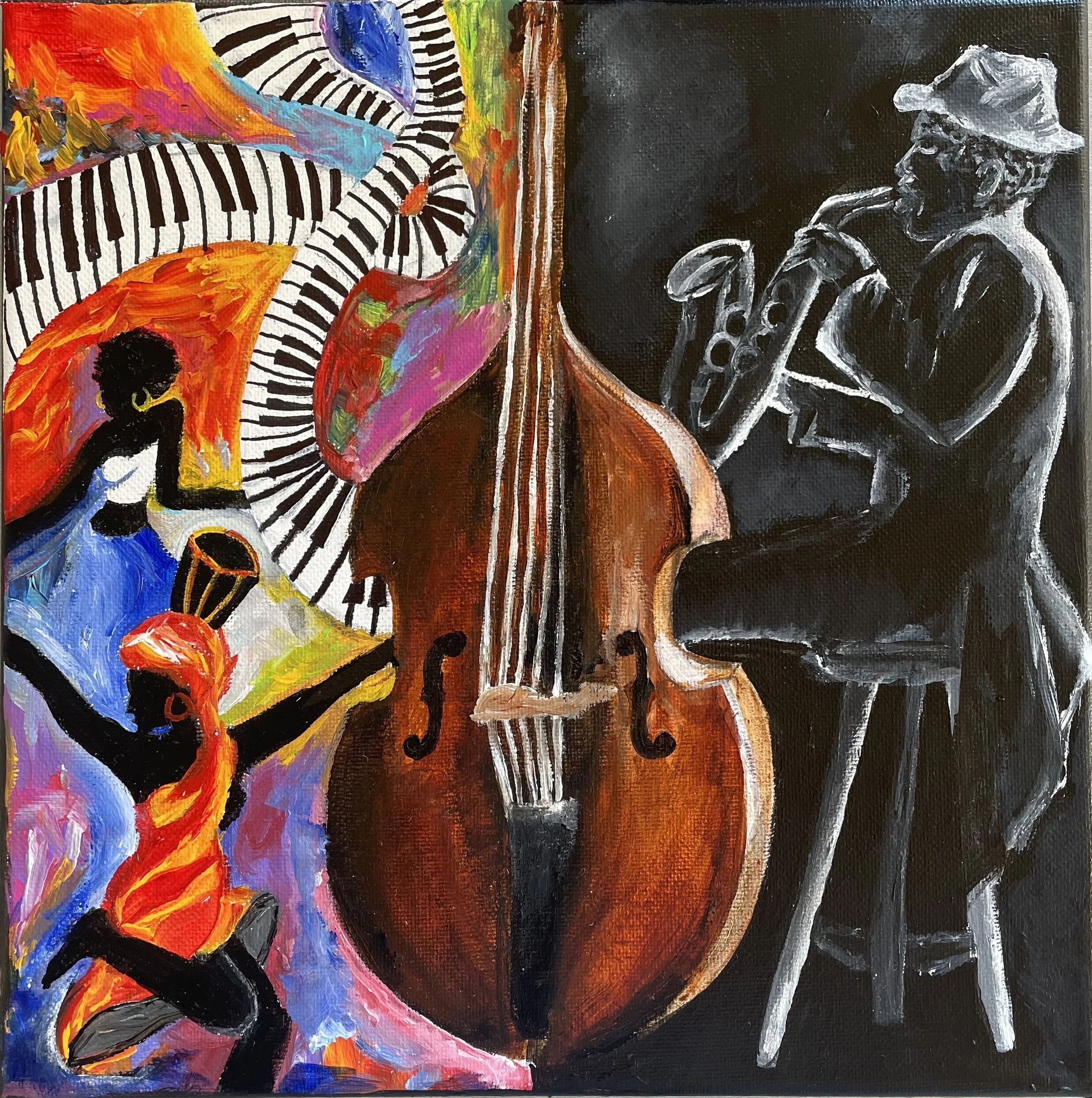STUDENT RESOURCES
Choose from the options below to schedule time with Marc.
Office Hours/Drop-in: 50A, Mondays 10 - 11 am (Zoom; see syllabus for link); schedule a meeting or lesson with me below.
Final Project Submissions from Former Students
Final projects will be based on scholarly research and applied in an intellectually rigorous manner according to your own musical, intellectual, and other interests. Possible approaches include:
a research paper
an ethnographic or oral history project with local musicians or music fans
an annotated bibliography related to a topic covered in this course
a concert critique involving some form of musical and event analysis
a critique/review of a music album, performer's recording history, or record label
other (i.e., a composition, a visual art piece or series, a long-form poem, a DJ set, a short film, or a podcast)
Students should choose their topics and turn in a type-written proposal (labeled as below) by Tuesday, January 17, 9am (Week 2). You TA will either approve your proposal, or ask for re-submissions, by Monday January 23, 9am (Week 3).
The project is graded based on engagement with scholarly literature, relevance to the academic study of music, and writing (such as spelling, grammar, structure, and accurate citations). Proposals are worth 5 points toward the project grade.
Below are several examples of students’ submissions from last quarter. These projects are exemplary and should be used as inspiration for what’s possible.
“The Colorful Feelings of Jazz”
For her Final Project in Jazz in American Culture, 50A, at UCLA (2022), "The Colorful Feelings of Jazz," Lexis Hsieh attempted to convey the “historical background of blues, women in jazz, and the joy of freedom of expression through the experience of color.” I feel the medium enabled her to convey her ideas in a way that not only made sense to me (a layman of the visual arts), but is presented so that non-artists can grasp the thoughts and concepts she introduced as well.
"Mamba's Rag" composed and performed by
Lev Boraz Beaumont
For his Final Project in Jazz in American Culture, 50A, at UCLA (2022), Lev composed and recorded an original ragtime tune. He performed it on both the guitar and banjo--with different tunings and finger picking styles, too!
“Genghis Blues: Hybridization and Heterogeneity of Sound in Tuvan and Delta Blues Blend"
Zibaa Uyghur Adil
For her Final Project in Jazz in American Culture, 50A, at UCLA (2022), Zibaa Uyghur Adil researched Paul Pena and Kongar-ol Ondar's album, Genghis Blues. Zibaa Uyghur Adil utilized the visual podcast/essay format to present her findings.
"The Roots of Jazz Music"
Krishnaya Coleman-Salgado
For his Final Project in Jazz in American Culture, 50A, at UCLA (2022), Krishnaya Coleman-Salgado submitted his painting "The Roots of Jazz Music." This piece conveys such richness and depth.
Jazz without the Patriarchy: A Podcast Episode
Anandita Pandey
For her Final Project in Jazz in American Culture, 50A, at UCLA (2022), "Jazz without the Patriarchy: A Podcast Episode," Anandita Pandey synthesized course material and supported the materials/details from our class reading/lectures/discussions in relevant and interesting ways.
I feel the podcast platform worked beautifully!
You can follow her work on Spotify (click the link to the left).
The Endurance of Jazz Music Through Social Media
Bridget Carlson
For her Final Project in Jazz in American Culture, 50A, at UCLA (2022), Bridget Carlson collected TikToks that were related to jazz music, identified common themes, and analyzed how they might influence a wide audience of viewers. She concluded that TikTok is a uniquely beneficial environment for jazz music to exist and circulate. TikTok gives jazz wider reach and larger audience. Not only does it “make[s] the music more accessible to people who want to learn how to play it,” but it “promotes collaboration, reinterpretation, and improvisation.”
In her visual essay, "The Endurance of Jazz Music Through Social Media," Bridget discusses improvisation, heterophony, orality and literacy, instructional trends, reinterpretation/"spin"/"ragging," dance and corporality, authenticity, how jazz can help facilitate the "reemergence" of jazz, and social media as a tool for jazz artist to collaborate, find community, and promote themselves.
Her research into the topics and the amount of active viewing research (statistics, social theory, etc.) is impressive, AND her inclusion of—and how to view—TikToks was not only helpful, but ingenious.
Jazz's Role in Contemporary Music: a visual podcast/essay by Gavin Trent
For his Final Project in Jazz in American Culture, 50A, at UCLA (2022), Gavin Trent researched jazz's role in contemporary music: sampling jazz in hip hop, electro swing, and musical expression within Black American Music, in general. Gavin utilized the visual podcast/essay format to present his findings. I feel the visual podcast/essay format enabled him to convey his ideas in a way that not only made sense to me (a professional musician) but is presented so that non-musicians can grasp his thoughts and the concepts he introduced well. It was quite entertaining and insightful! His hard work is evident in this project.
"A Visual History of Jazz Through Music and Dance"
Madison Hart
For her Final Project in Jazz in American Culture, 50A, at UCLA (2022), Madison Hart researched
and reenacted jazz dance through American History; she refers to her project a "visual history of jazz."
For her Final Project in Jazz in American Culture, 50A, at UCLA (2022), Emily Rusting researched Billie Holiday's rendition of "Strange Fruit," one of the most powerful and moving songs in jazz history. The hauntingly beautiful track, originally written by Abel Meeropol, speaks to the horrors of racism and the brutality of lynching. Holiday brought an entirely new level of emotion to the song, her distinctive vocal style adding weight to the lyrics. Today, it still carries immense emotional power, and is a reminder of the need to confront racism and fight for justice and equality. With its timeless message, "Strange Fruit" remains an important part of our cultural and musical history.




